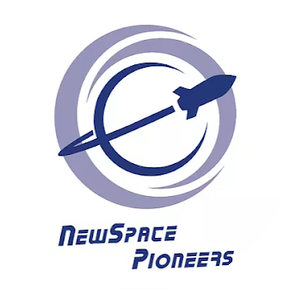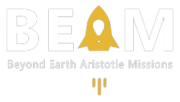Competitions
As BEAM, our vision is to take up and realise projects related to the space industry. Through four years of experience in many programs, we can offer technical expertise and support to any new student team that wishes to take part in the following cycles of these programs.
In reality, we desire to take part in a lot of different programs!
REXUS/BEXUS

The REXUS/BEXUS programme is realised under a bilateral Agency Agreement between the German Aerospace Center (DLR) and the Swedish National Space Agency (SNSA). The REXUS/BEXUS programme is further realised with the help of ESA, ZARM, Eurolaunch, MORABA and SSC.
The REXUS/BEXUS programme allows students from universities and higher education colleges across Europe to carry out scientific and technological experiments on research rockets (REXUS) and balloons (BEXUS). Each year, two rockets and two balloons are launched, carrying up to 20 experiments designed and built by student teams.
Here are each platform’s technical characteristics:
- REXUS: REXUS is a single-stage rocket propelled by an Improved Orion motor. With a length of 5.6m and a diameter of 0.356m, the rocket can typically host a payload mass of up to 95kg (including the service and the recovery modules). This rocket gives approximately 3 minutes of spaceflight and can reach altitudes between 78 and 93 km. REXUS is flexible, the rocket could be despun and the nosecone ejected during the flight. Moreover, all experiments are recovered after the flight.
- BEXUS: Payloads are assembled on a medium-sized gondola (1.16 m x 1.16 m x 0.84 m). The total lifted mass is approximately 300kg with a payload weighing between 30 and 112kg (which generally means 4 student experiments per gondola). The balloon, a 35SF from Zodiac aerospace, is filled with helium gas.
During the 18 month duration of the REXUS/BEXUS campaign, a team can experience a simulation of the processes that a space mission must go through. This educational programme simulates the stages, paperwork, reviews and processes that take place in order for a space mission to be realised, from the idea conception, up to the final data analysis. The only difference is the scale of the mission where, being an educational programme, the size and timescale of the mission are somewhat reduced.
IGLUNA

IGLUNA is part of the ESA_Lab initiative launched by ESA to create a hub for innovation between universities, research organizations and industry. Space Innovation coordinates the IGLUNA platform, leads the main systems engineering activities, coaches the student teams, organises the events, and communicates with the general public.
The platform’s goal is to get students from worldwide universities to design and collaborate on innovative projects for the future of space exploration and the improvement of life on Earth. During the project, university students apply their knowledge to solve a technical challenge, to sustain life in an extreme environment, increasing in parallel the maturity of technologies relevant to the space domain.
More specifically, the student teams are tasked with finding solutions to the problems and difficulties presented in a possible human colonization of the moon. This multidimensional problem has a broad spectrum of subjects, from designing and building the colony to the life support systems, telecommunications and navigation, energy management as well as human prosperity and science.
Each team develops innovative ideas during an entire school year, which will be presented In the Swiss Museum VERKEHRSHAUS and at the Pilatus centre.
For the year 2020, the campaign was completed virtually due to the SARS-CoV-2 pandemic.
CanSat in Greece

CanSat in Greece is a panhellenic competition regarding space technology. It is organized by SPIN – Space Innovation in cooperation with ESA and the World CanSat & Rocketry Competition (WCRC)
The students take up the task of designing and building an educational satellite the size of a soda can, which will execute the space mission they envision. The satellite is launched at an altitude of 1km via attaching it to a rocket built by SPIN and then releasing it at that altitude. After release, the satellite lands safely with the use of a parachute, completing the selected mission.
The program’s duration is 8 months after selection and it is split into 2 categories, one for highschool students and one for university students. The winning team of each category is selected to continue to the international WCRC championship.
NASA Space Apps

Nasa’s International Space Apps Challenge is an innovation hackathon with a duration of 48 hours, taking place in over 200 cities worldwide.
The Greek Newspace Society is responsible for organizing the Space Apps hackathon in Greece.
New Space Pioneers

New Space Pioneers is a 6 month internship offered to select university students and young professionals. The partakers have the chance to realise a short term research related to the space sector in cooperation with the Greek Newspace Society Academic Advisors
